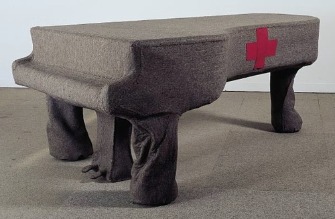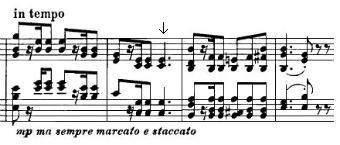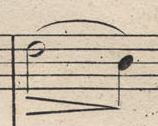Is written music a set of instructions? A student asked my opinion of a performance he described. In the performance, a pianist used the pedal to sustain long notes while taking his fingers off the keyboard. After thinking, I wrote: "I think the use of the pedal for sustaining notes or helping with legato depends very much on what music is being played. For me, in music by Brahms or Mozart, the central Germanic repertory, long notes must be … [Read more...]
Padded
Piano keys are made of wood that's weighted with metal, and faced with plastic in place of what used to be ivory. They are levers. How exactly a musician touches these sticks may or may not alter the physical sound the piano makes. The cultivation of legato -- the binding together of successive tones produced with flexible wrist -- is an important aspect of classical piano training. Some of us wonder about the science of legato, of what we … [Read more...]
Stay Down
Playing for me in a recent masterclass, a pianist performed Liszt's etude "Wild Hunt." At the end of two measures of melody (m. 60), he raised his wrists immediately after playing the last note in the bar, releasing his fingers from the keys -- although the notated duration of this sound is the longest in the line. The piano is a device that never came with a set of instructions. In a sense, musicians are always making how-to guides. And … [Read more...]
Simple is difficult
The simplest things can be the most telling. A very small, simple bit of music reveals everything about a player's technique, sound -- dare I say, soul? Consider the two-note slur: a group of two notes, frequently a descending step, connected, bound, by a legato phrasing tie (slur). A very basic building block, frequently realized very poorly, even by celebrated, professional executants. Classical musicians often strongly desire to perform … [Read more...]




